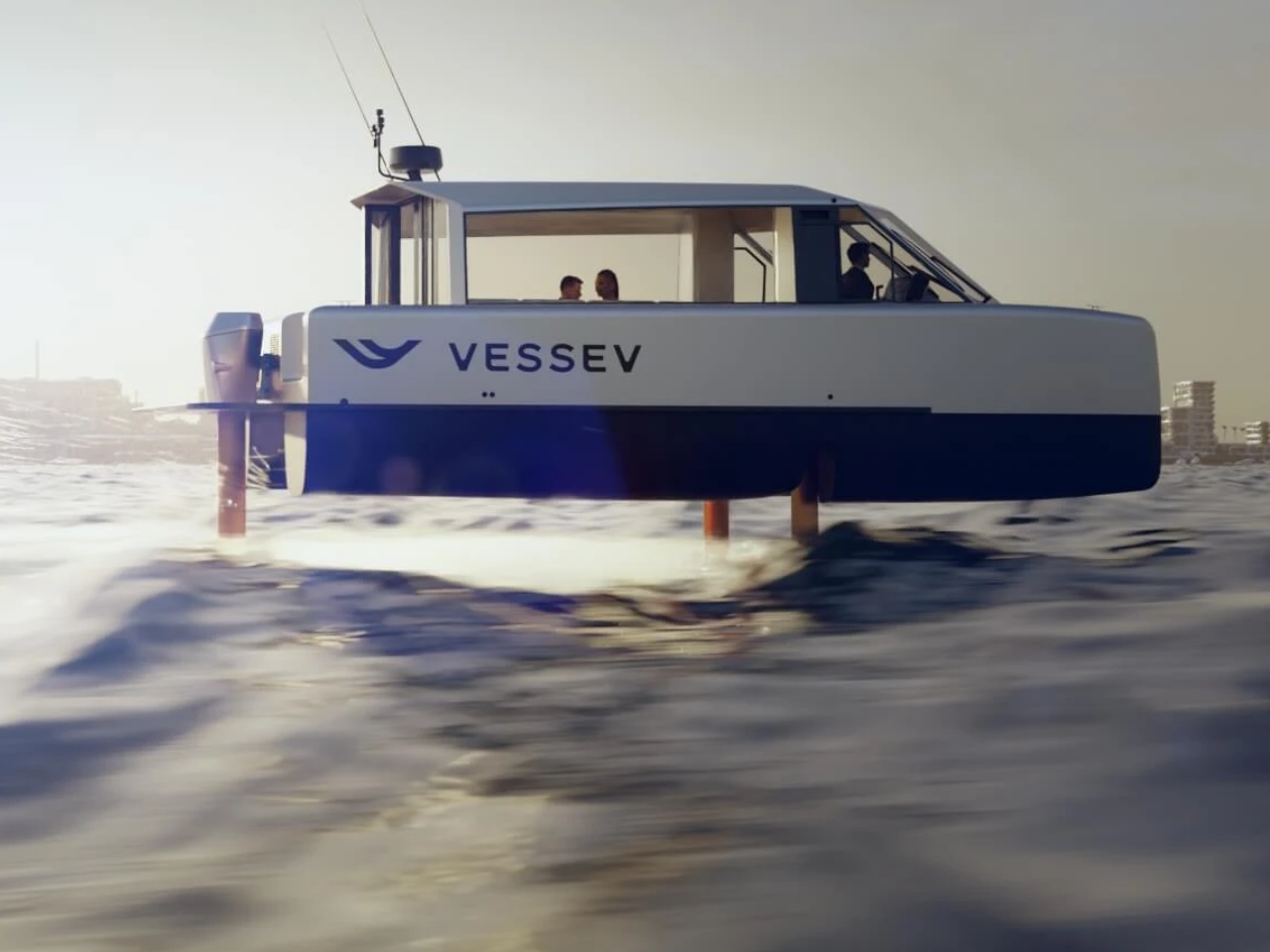
Vessev, a leader in sustainable marine technology, has launched the VS-9 electric hydrofoiling vessel, set to redefine premium water transport. By merging cutting-edge America’s Cup technology with sleek marine innovation, the VS-9 promises a smooth, quiet experience akin to flying. Designed to enter commercial service with New Zealand’s largest ferry operator, Fullers360, the vessel will begin transporting passengers later this year.
Designer: Vessev
Eric Laakmann, CEO of Vessev, highlighted the significance of this debut, saying, “This marks the beginning of a global shift toward sustainable energy in maritime transport. With 33 million vessels worldwide, only a fraction are sustainable. The VS-9 and our collaboration with Fullers360’s NetZero Maritime team are key to advancing new marine technologies.”
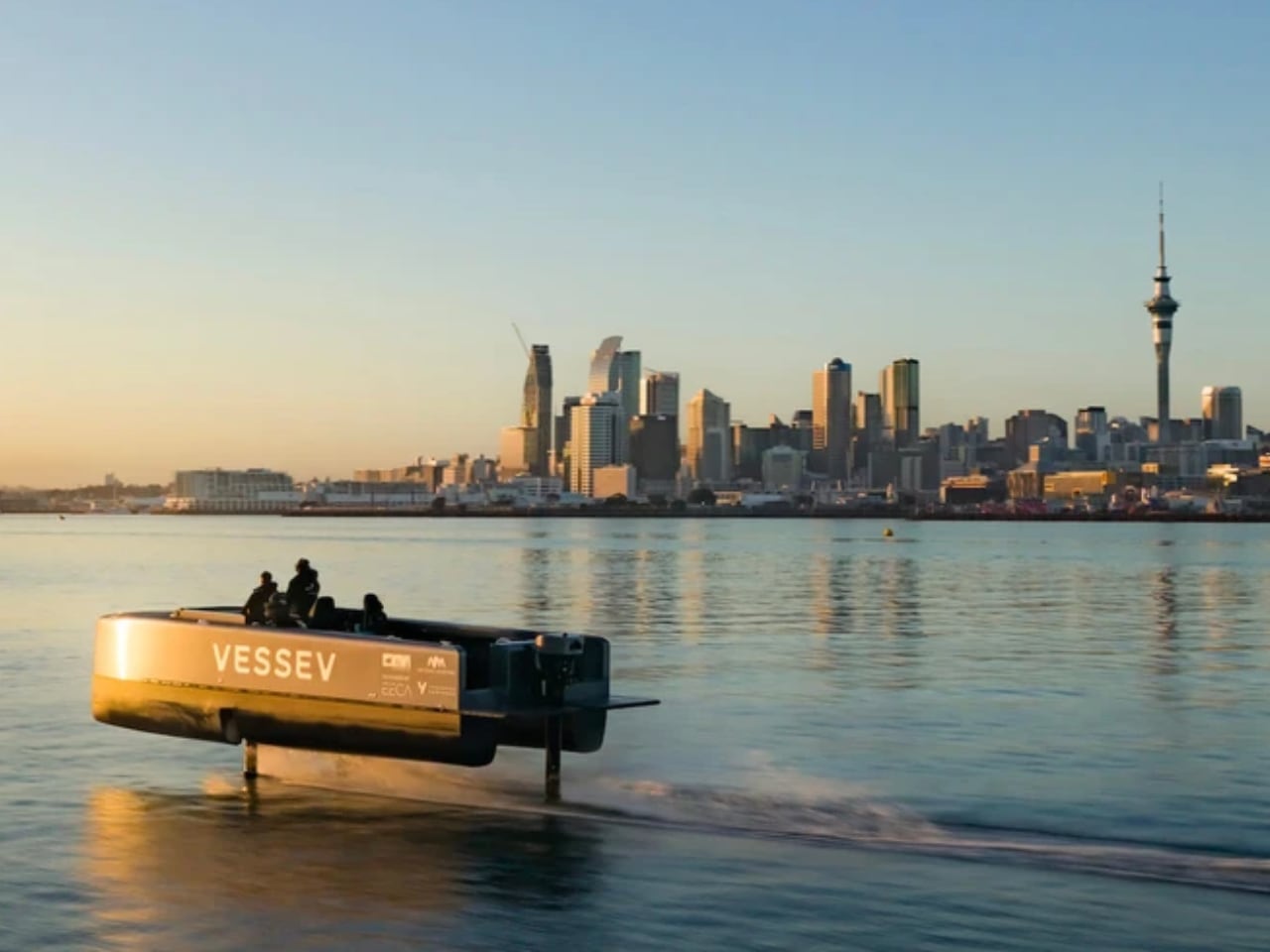
Transforming Water Transport
At nine meters long, the VS-9 blends state-of-the-art hydrofoil technology with passenger comfort, capable of transporting up to ten passengers at a cruising speed of 25 knots. Its retractable hydrofoils lift the vessel above the water’s surface, easily cutting through waves and creating a frictionless, smooth experience. Laakmann explained, “Flying above the waves, the VS-9 offers the comfort of a large vessel on a much more agile platform.”
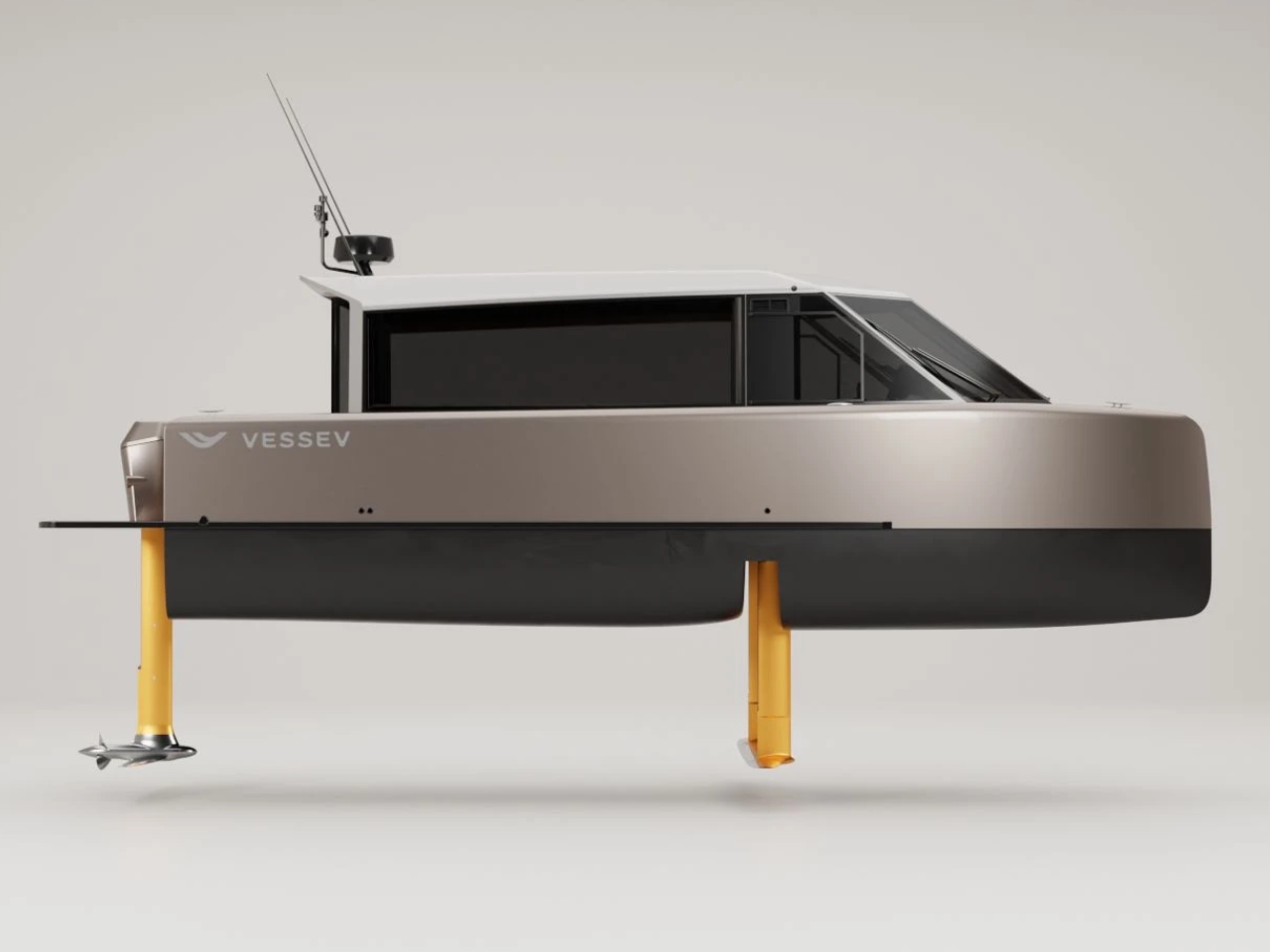
The vessel’s design revolutionizes the traditional boating experience, eliminating the need for larger ships to counteract waves. The VS-9’s hydrofoils minimize this dependency, allowing the smaller, more efficient boat to provide a premium, stable ride. With its energy-efficient design, the VS-9 lowers operational costs and reduces energy consumption by up to 95% compared to fossil fuel-powered boats.
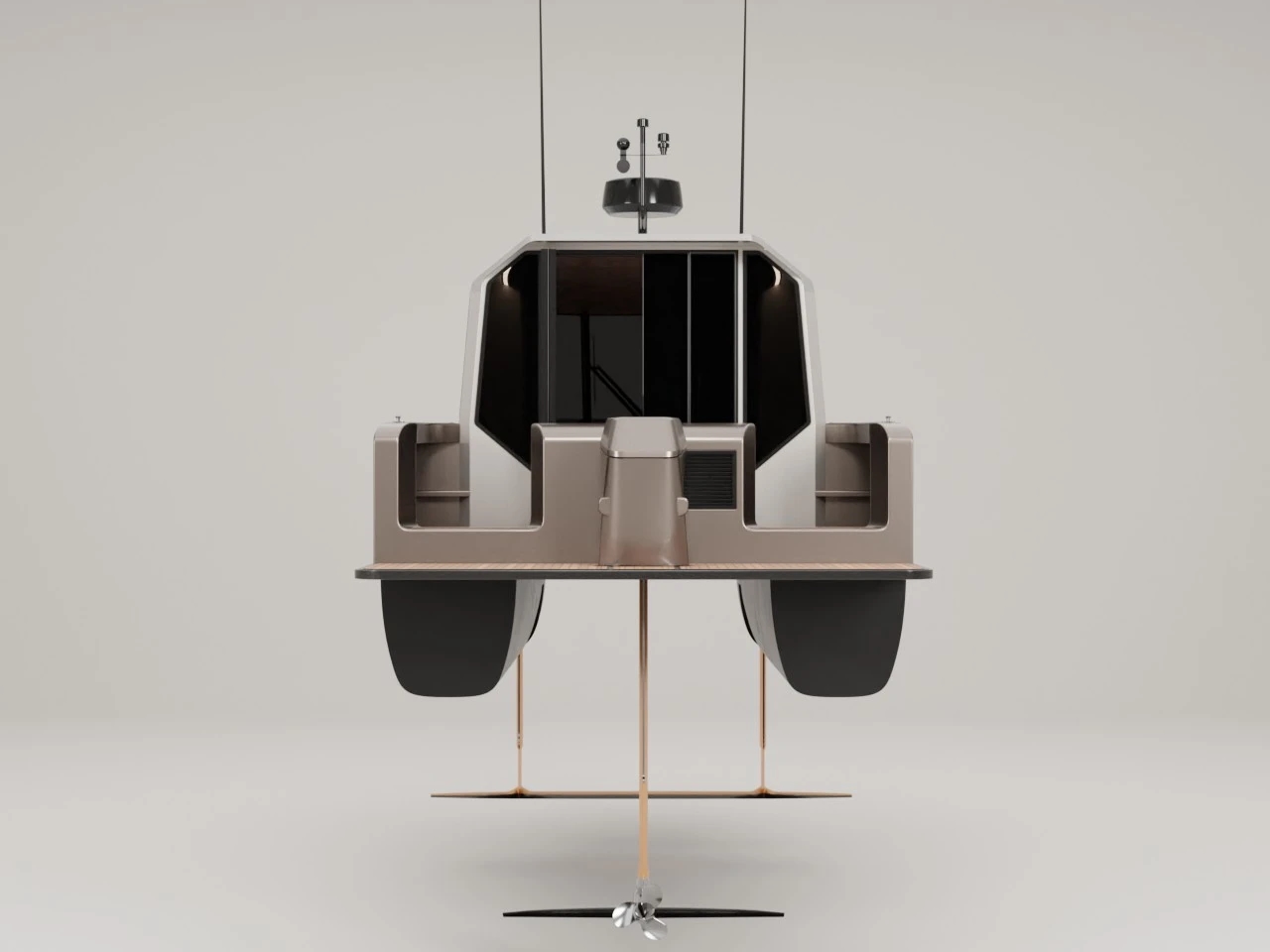
Exterior Design: Built for Performance
The VS-9’s exterior design emphasizes both performance and aesthetics. Crafted from carbon-fiber laminates, the lightweight hull is built for efficiency and durability. The sleek, minimalist lines flow seamlessly into the retractable hydrofoils, allowing the vessel to glide above the water or retract the foils for shallow-water navigation. Laakmann remarked, “The simplicity of the exterior is deliberate—every curve and surface has been engineered for aerodynamic and hydrodynamic performance.”
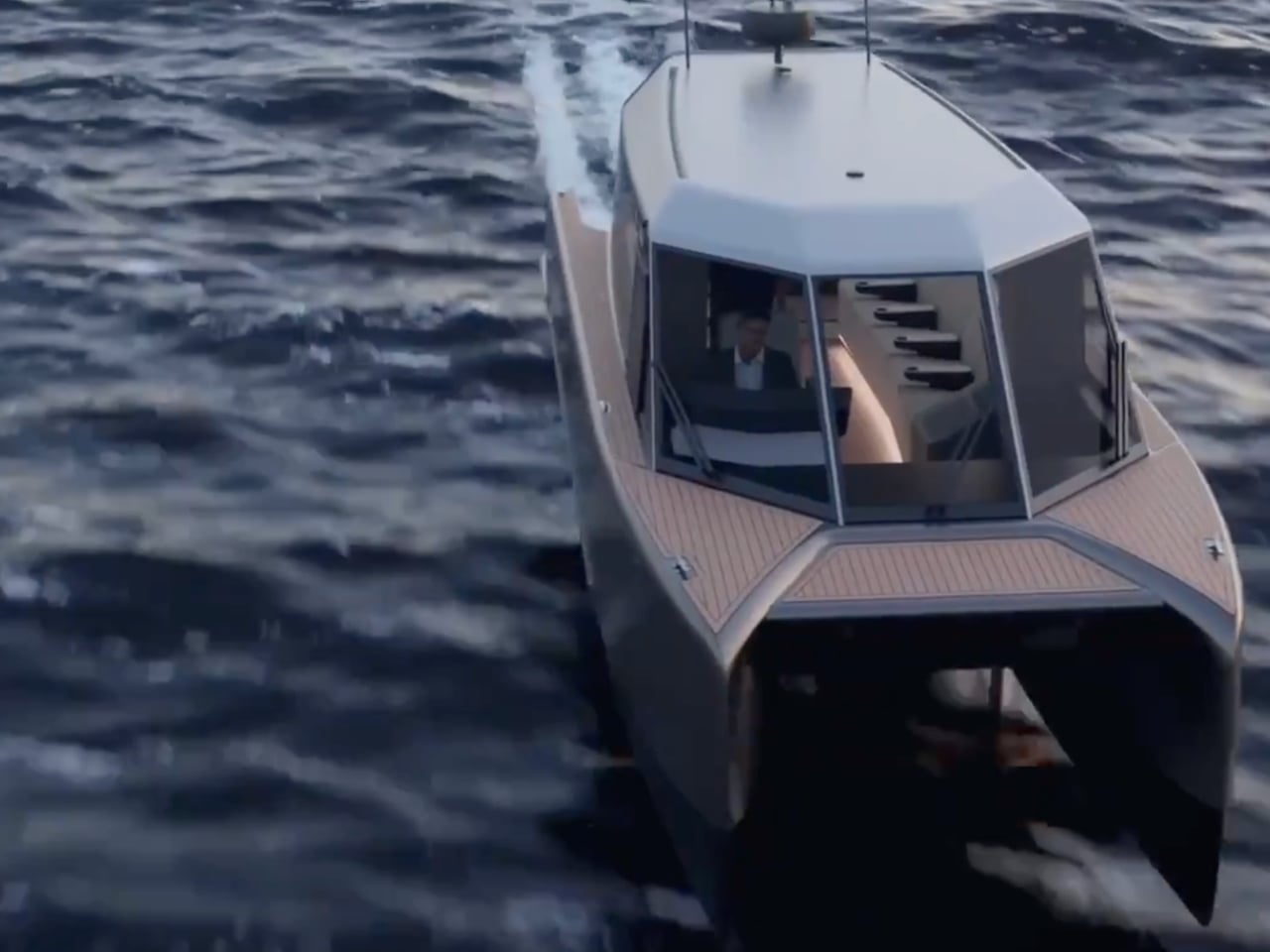
Inspired by aerospace and nautical designs, the VS-9’s exterior maintains its clean and streamlined form while ensuring real-world resilience. Whether skimming over calm bays or navigating rougher seas, the vessel’s silhouette speaks to both functionality and elegance.
Interior: Designed for Luxury
Inside, the VS-9 is no less impressive. The cabin, designed with premium materials such as leather and refined textiles, seats ten passengers comfortably in an open, spacious layout. Each seat is ergonomically designed to support long rides, while the panoramic windows offer an uninterrupted view of the water, enhancing the serene environment. The wraparound glass design ensures that passengers can enjoy the scenery without obstruction, immersing themselves in the peacefulness of the journey.
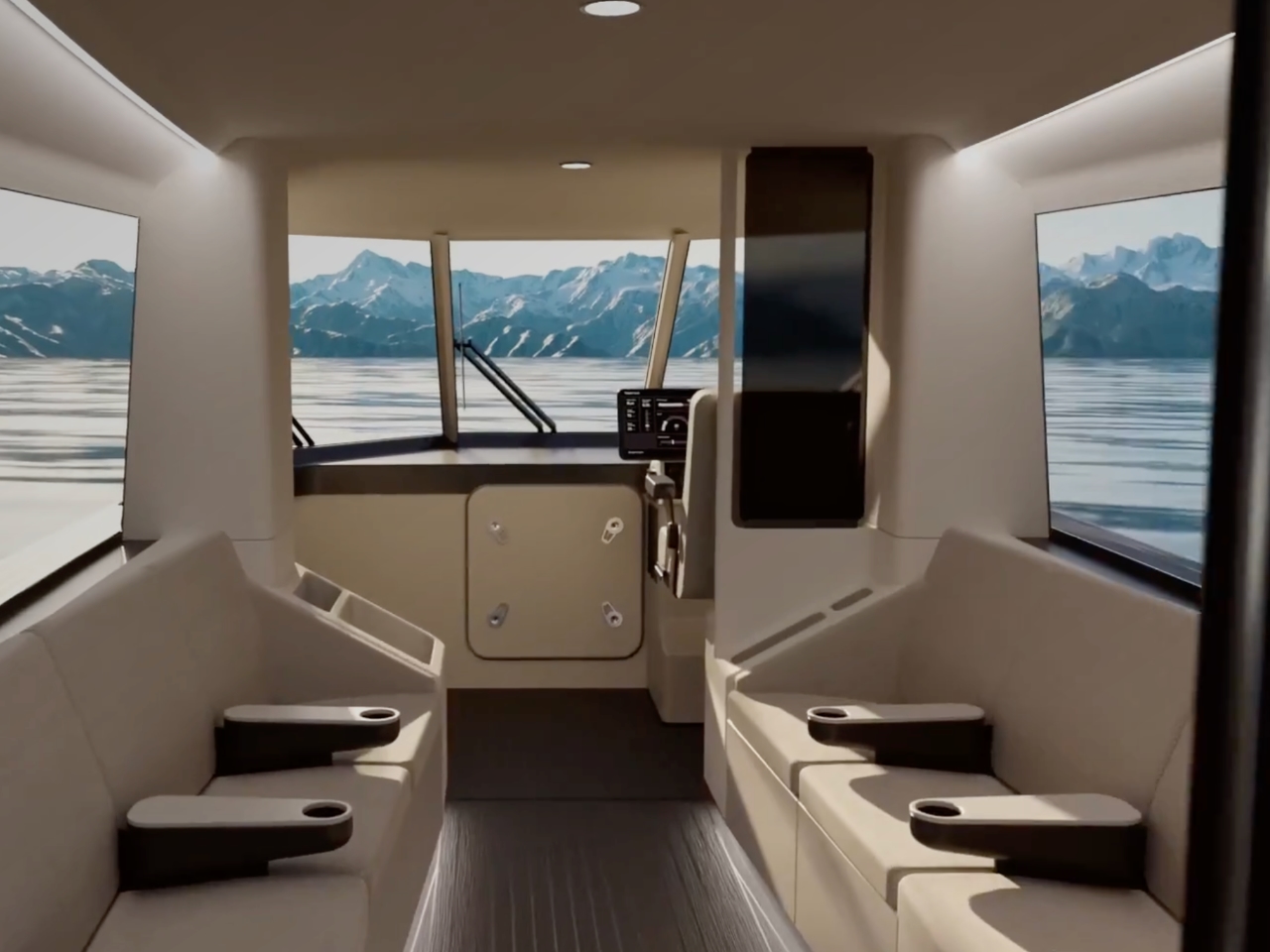
“Our goal for the cabin was to create an experience akin to private jet travel,” said Laakmann. “The wraparound glass and quiet ride make passengers feel like they are gliding above the water rather than cutting through it.”
The spacious interior combines functionality and style, providing passengers comfort and connectivity to the natural surroundings. The thoughtful design extends to the sound-dampening materials, making the VS-9 an almost silent ride, even at cruising speeds.
Advanced Technology Meets Sustainability
Vessev’s engineers, using expertise from America’s Cup-winning boats, developed a hydrofoil system equipped with high-precision flaps that adjust automatically to sea conditions, optimizing stability. This allows the VS-9 to perform reliably in larger seas. “Our hydrofoil technology gives us high control authority, making the vessel capable of handling more challenging conditions while remaining efficient,” Laakmann said.
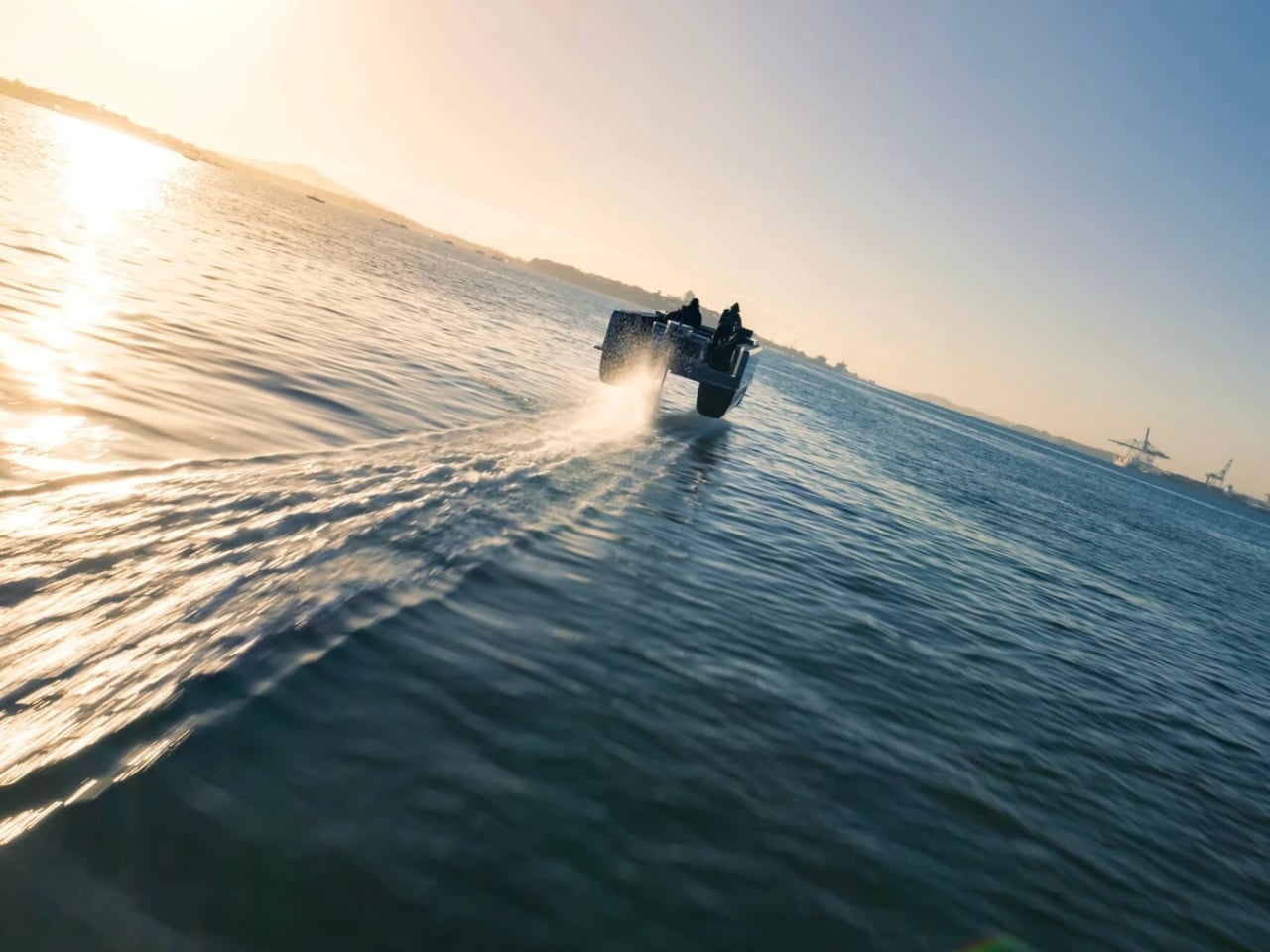
The retractable foils allow for versatile operation in deep and shallow waters, simplifying maintenance and transport. “We designed the retractable foils to maintain pristine condition and maximum performance over time, even in varying water conditions,” Laakmann added.
Leading the Way for Future Vessels
Mike Horne, CEO of Fullers360, expressed excitement over the VS-9’s environmental and economic impact. “We aim to be 100% electric or hydrogen-powered by 2040, and hydrofoiling is a critical part of that vision. The VS-9 is the first fully electric passenger vessel operating in Auckland,” Horne said.
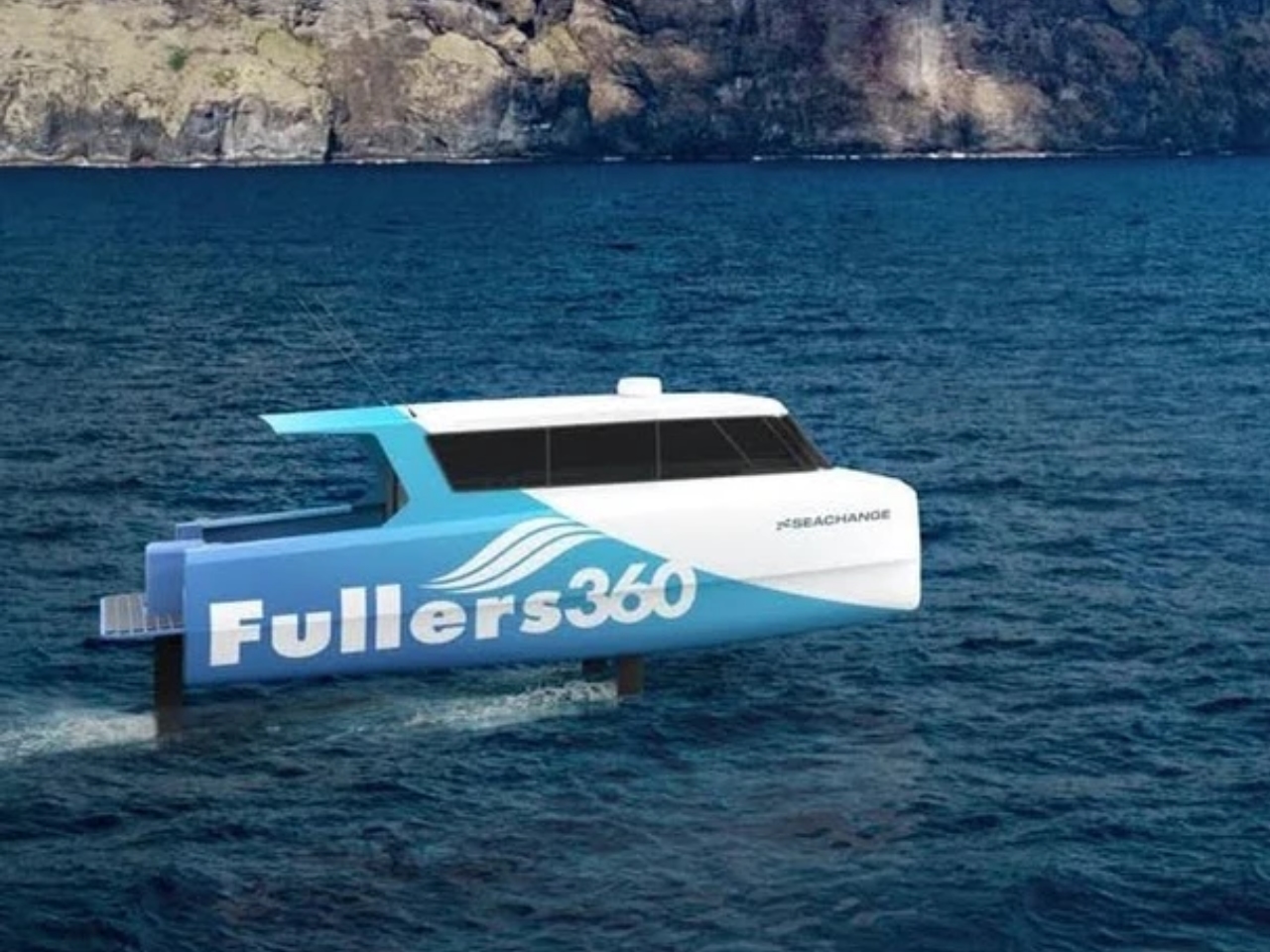
This technology is scalable, and Vessev is already developing the VS-18, a larger version capable of carrying 100 passengers. “The VS-18 will use the same technology but on a larger scale, opening up more possibilities for marine transport,” Laakmann revealed.
Charging Capabilities and Efficiency
One of the key advantages of the VS-9 is its ability to operate with existing electric infrastructure in most marinas. This eliminates the need for costly charging station installations. “We designed the VS-9 to work with the existing charging infrastructure. During sea trials, we’ve used a standard AC 3-phase connection for multiple test sessions daily, making it easy for operators to adopt electric vessels without added costs,” explained Laakmann.
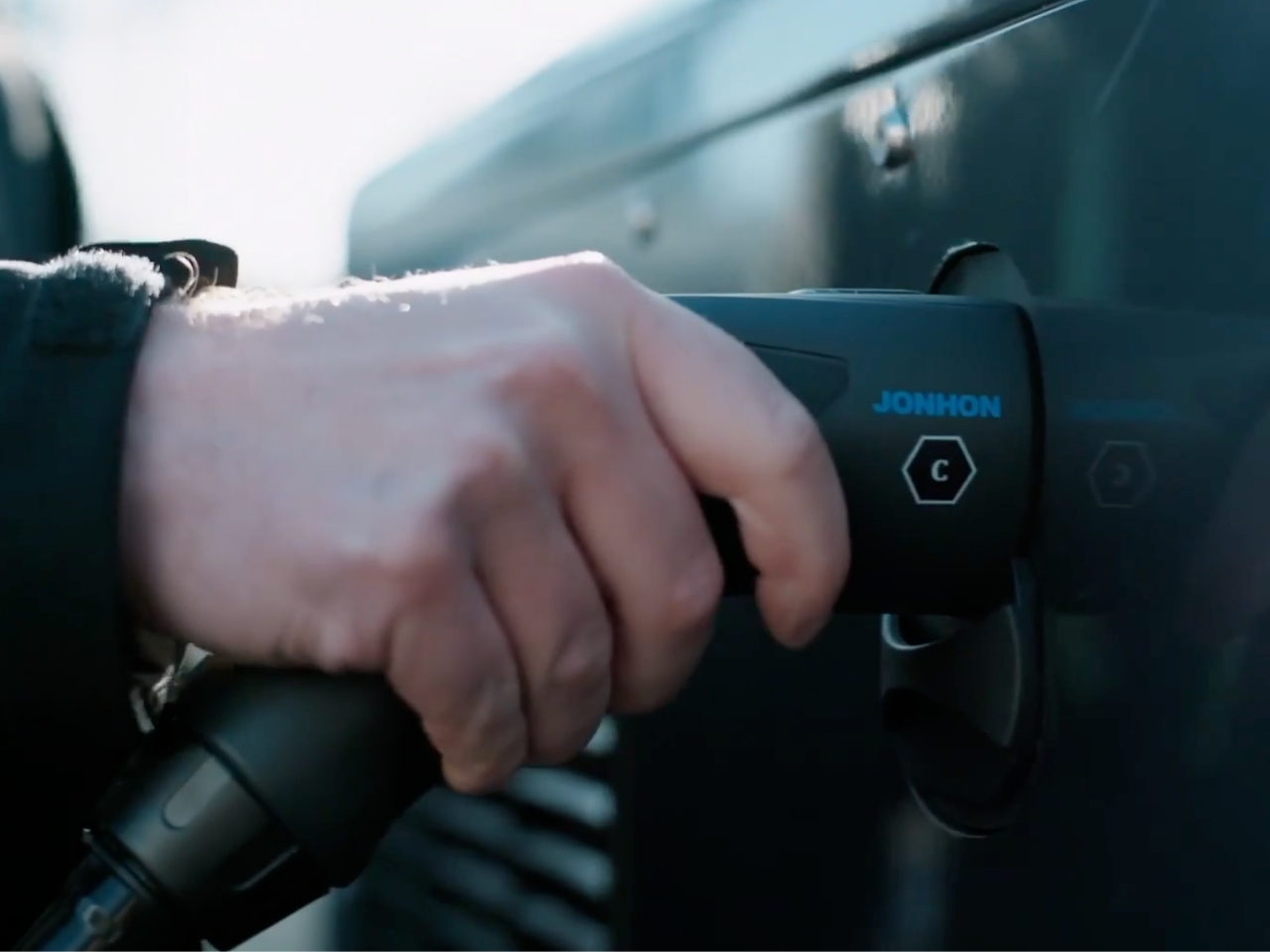
With Fullers360 as the launch partner, the VS-9 is set to transform marine transport in Auckland and beyond. “Auckland is becoming a model for green marine technology. The VS-9’s success will influence the global adoption of sustainable hydrofoiling vessels,” Horne added.
A Revolutionary Passenger Experience
Passengers aboard the VS-9 can expect a unique travel experience, with quiet, smooth gliding across the water. The hydrofoils eliminate the typical rolling sensation of traditional boats. Horne explained, “The VS-9 delivers a feeling closer to flying than sailing, creating an unmatched onboard experience compared to conventional vessels.”
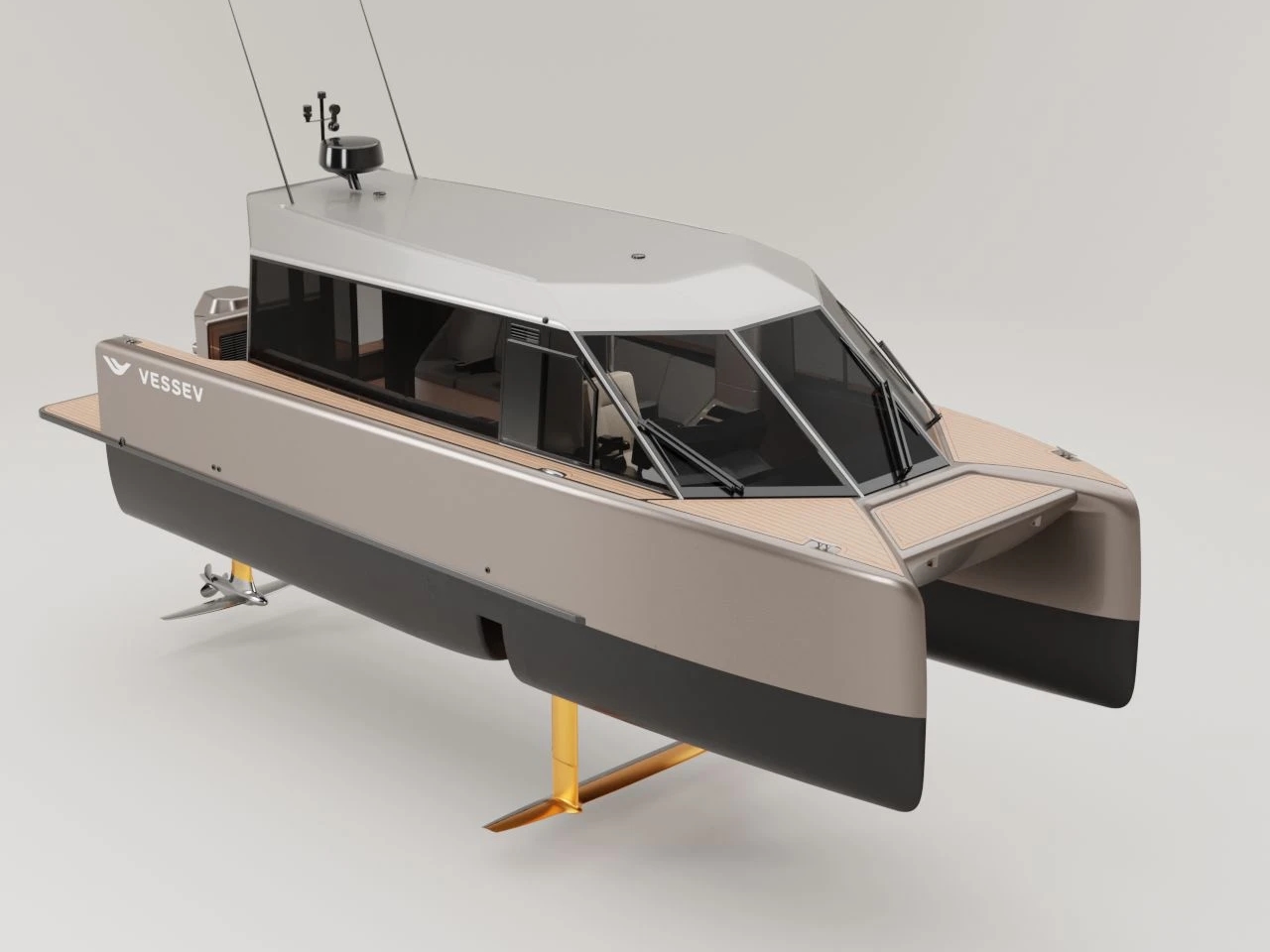
With sea trials demonstrating the vessel’s capabilities, Laakmann believes hydrofoiling vessels like the VS-9 will soon become the new standard in water travel. “Within a decade, hydrofoiling vessels will no longer be rare—they will redefine how we move across the water,” Laakmann concluded.
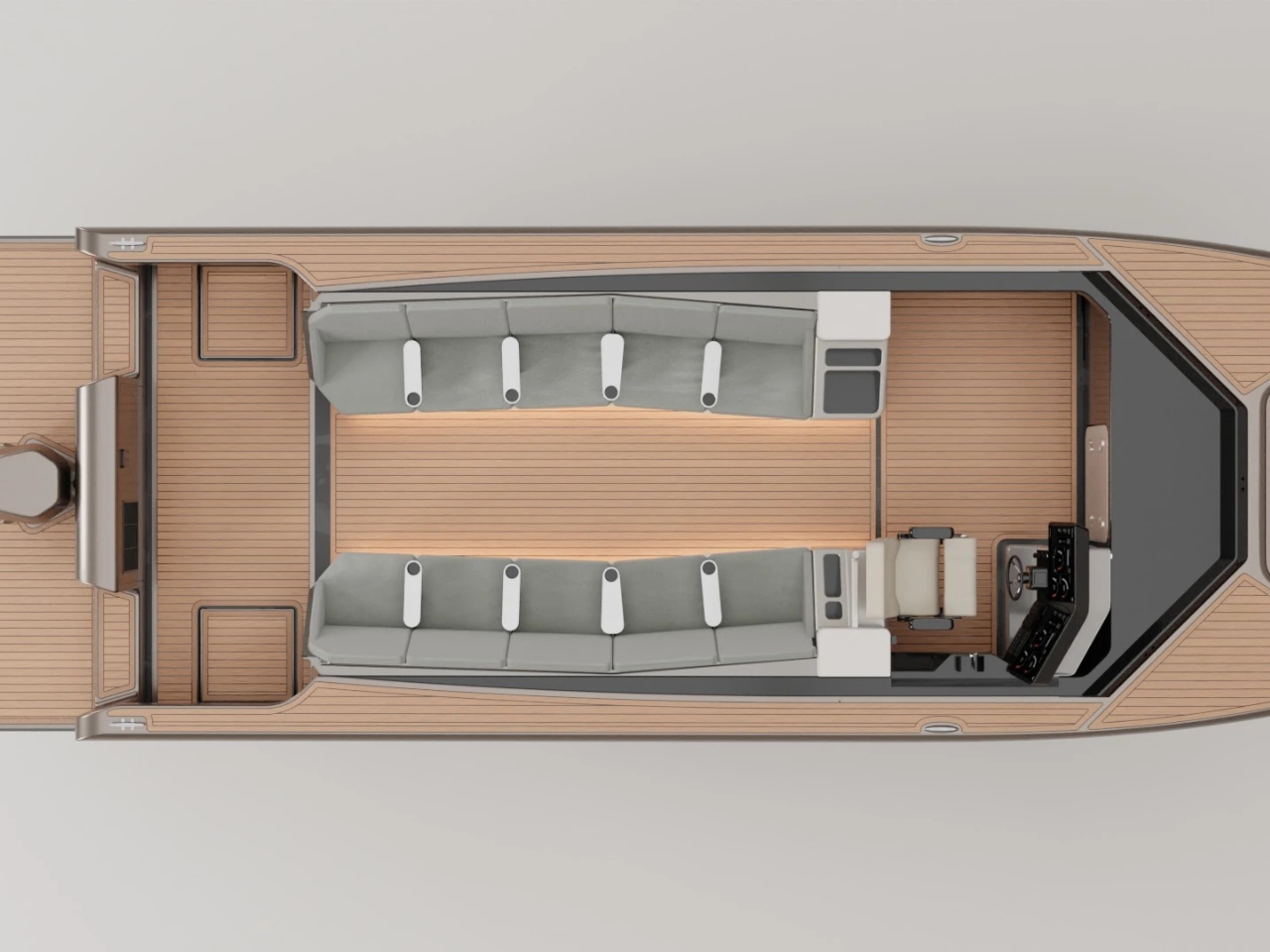
In every sense, the VS-9 sets a new bar for marine transport, combining eco-friendly technology with thoughtful design, making it an electric vessel that offers a glimpse into the future of water travel.
The post VS-9 Redefines Sustainable Marine Transport with Electric Hydrofoiling Innovation first appeared on Yanko Design.